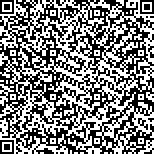本文已被:浏览 2939次 下载 3603次
投稿时间:2020-05-09
投稿时间:2020-05-09
中文摘要: 推进重大科技决策制度化,是我国建设世界科技强国、实现现代国家治理体系及治理能力现代化的重要内容。然而,对于正处于社会转型期的中国而言,面对一个更加不确定的风险社会,建构科学与决策的关系面临前所未有的严峻挑战。新冠肺炎疫情的爆发与蔓延,是一堂生动的风险社会启蒙课。在疫情中,关于科学与决策关系的讨论,特别是英国“群体免疫”决策引发的质疑和争议,揭示出风险社会中的循证困境。文章从追溯科学与决策关系的模式及其演进出发,梳理循证决策的路径和机制,提出以反思科学和纾解循证困境为基础建构科学决策的协同模式,并分析了该模式嵌入我国建设现代国家治理体系全局的具体任务和要求。
Abstract:Institutionalizing evidence-based policy making on ominous events is a significant part of the China's modernization of state governance system and capacity. Yet the relationship between science and policy in China is now facing more serious challenges in the context of social transformation confronting contemporary complexity and uncertainty. Coronavirus pandemic signs a series of difficulties on evidence-based policy through the hot discussion on the interaction of science and policy in China, which was also revealed by the “herd immunity” policy in the UK. Based on the historical frameworks of decisionist, technocratic and reversed (or the two-stages) models, which are applied to analyze the role of science in public policy, this study suggests that a new integrated and coordinated model should be built while reconsidering the role of science and avoiding the difficulties of science into policy. The basic components and the challenges of the new model to lead to a state governance system are also illustrated and analyzed.
keywords: evidence-based policy making national governance system governance capacity risk society rethink science coordinated model of science into policy
文章编号: 中图分类号: 文献标志码:
基金项目:
引用文本:
吕佳龄,温珂.循证决策的协同模式:面向国家治理体系和治理能力现代化的科学与决策关系建构[J].中国科学院院刊,2020,35(5):602-610.
LYU Jialing,WEN Ke.Coordinated Model of Evidence-based Policy Making: New Framework Towards State Governance System and Capacity[J].Bulletin of Chinese Academy of Sciences,2020,35(5):602-610.
吕佳龄,温珂.循证决策的协同模式:面向国家治理体系和治理能力现代化的科学与决策关系建构[J].中国科学院院刊,2020,35(5):602-610.
LYU Jialing,WEN Ke.Coordinated Model of Evidence-based Policy Making: New Framework Towards State Governance System and Capacity[J].Bulletin of Chinese Academy of Sciences,2020,35(5):602-610.


